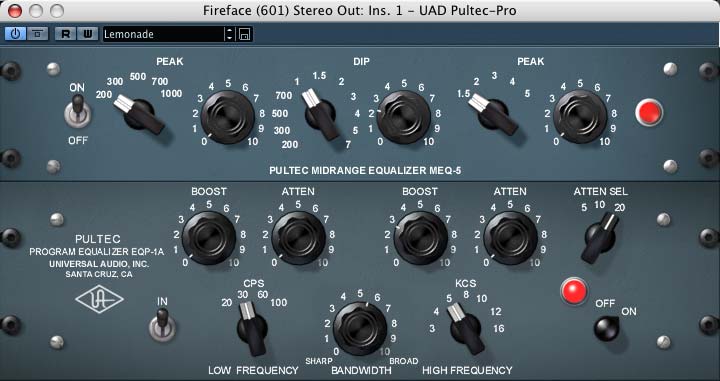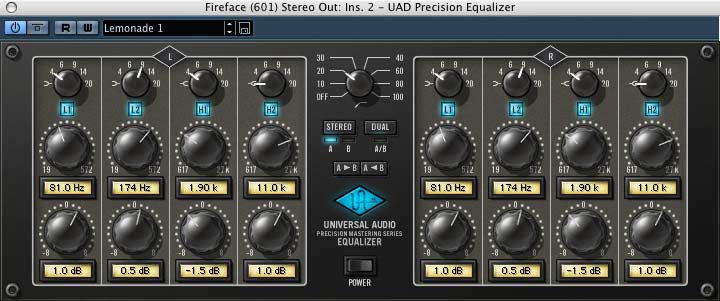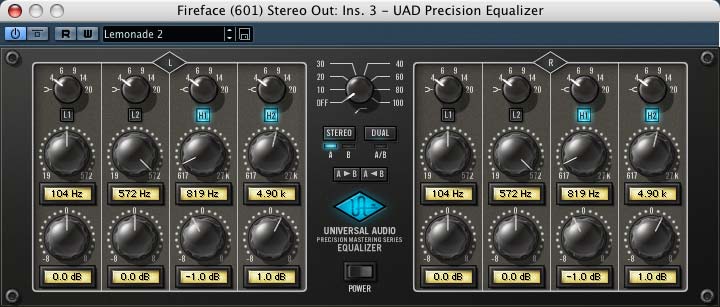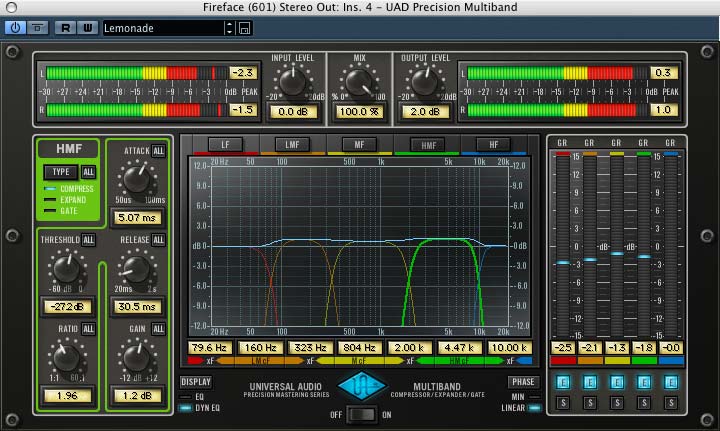Third Plug-In
Next I used another instance of the Precision EQ to, again, get rid of a little more of the hollowness of the mix and add some more bite in the guitars and vocal presence with a cut of 1 dB at 819 Hz and a boost 1 dB at 4.9 kHz with a narrow Q of 4.
Fourth Plug-In
Next, I used the new Precision Multi-Band Compressor. I used all five bands to different degrees with compression and tonal shaping combined. I started with Mix settings at 100% and linear phase selected for all bands of compression. (I did like what I heard when I used Mix settings at a little less than 100%, but for this particular song, I felt it needed to be used fully.) For the Low band, I wanted to have the compressor only become active when the bass frequencies (particularly the deep kick frequencies and hot spots from the bass guitar) jumped out. This is a pop song that moves along solidly and rhythmically. Keeping the foundation consistent helped maintain the power of the rhythm. I used a threshold of -32.9 dB, and attack of 14.8 ms, a release of 41.1 ms with a ratio of 2.03:1. The idea is that with a slow attack, the bass frequencies would not cause the compressor to pump. A slow release would hold on just long enough to ease back to zero the gain reduction. A relatively gentle ratio helped maintain the naturalness of the sounds.
For the Low-Mid band, I used the settings of -26.2 dB for a threshold, 7.26 ms for an attack, 24.3 ms for a release and ratio of 1.74:1. I also added 1.1 dB of gain at this stage. The reason for these setting was to help with the warmth of the mid-bottom end, having a higher threshold and quicker attack and release than the Low band but a lower ratio as to not let peaks through so much, but also not hold them back (lower ratio) once the threshold was reached. The Mid band settings added .8 dB of gain for more presence of the vocal range. Not much compression was done, even with the threshold low at -32.4 dB (to catch the snare hits), the attack at 16 ms, 28.2 ms release and a ratio of 2.13:1. I wanted the midrange to come up a little bit after shaping the tone with the EQ's earlier in the chain. Once I had sculpted the sound to my liking, the compression in this band particularly was used to bring back the overall tonal balance throughout the frequency spectrum of the song.
The High-Mid band had settings of -27.2 dB as a threshold, 5.07 ms for the attack, 30.5 ms for the release and 1.7:1 as a ratio with a gain makeup of +1.2 dB. With higher frequencies having shorter wavelengths, I wanted the attack much quicker and the release much longer. That helped keep cymbal attacks in check without smearing the top end or the decay of the cymbals and the guitars and vocals. The High band was even quicker, and less affecting on the attack (4.96 ms), slower with the release (40.2 ms), a slight ratio (1.71:1) and a low threshold (-33.6 ms) with no gain makeup.







